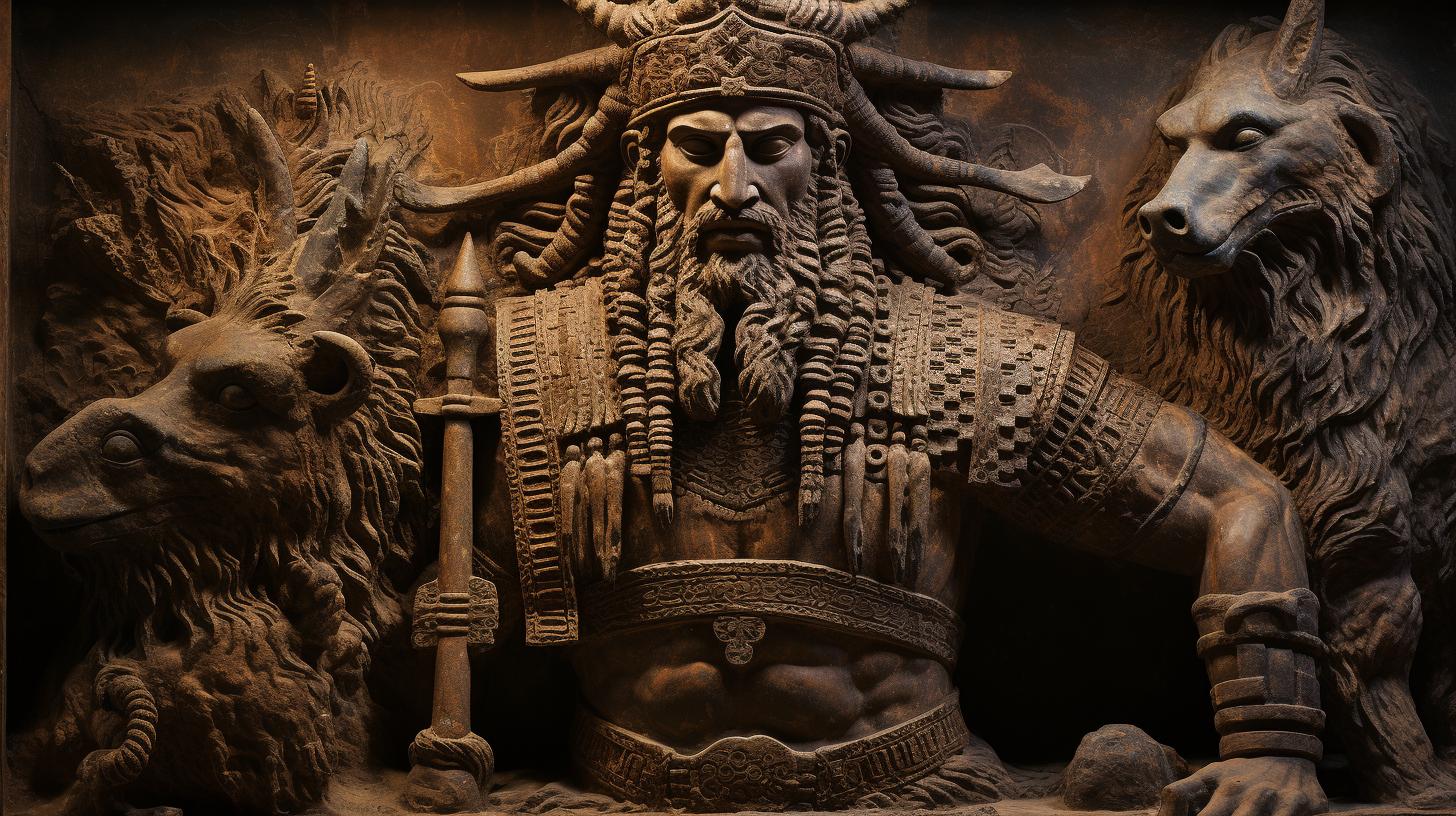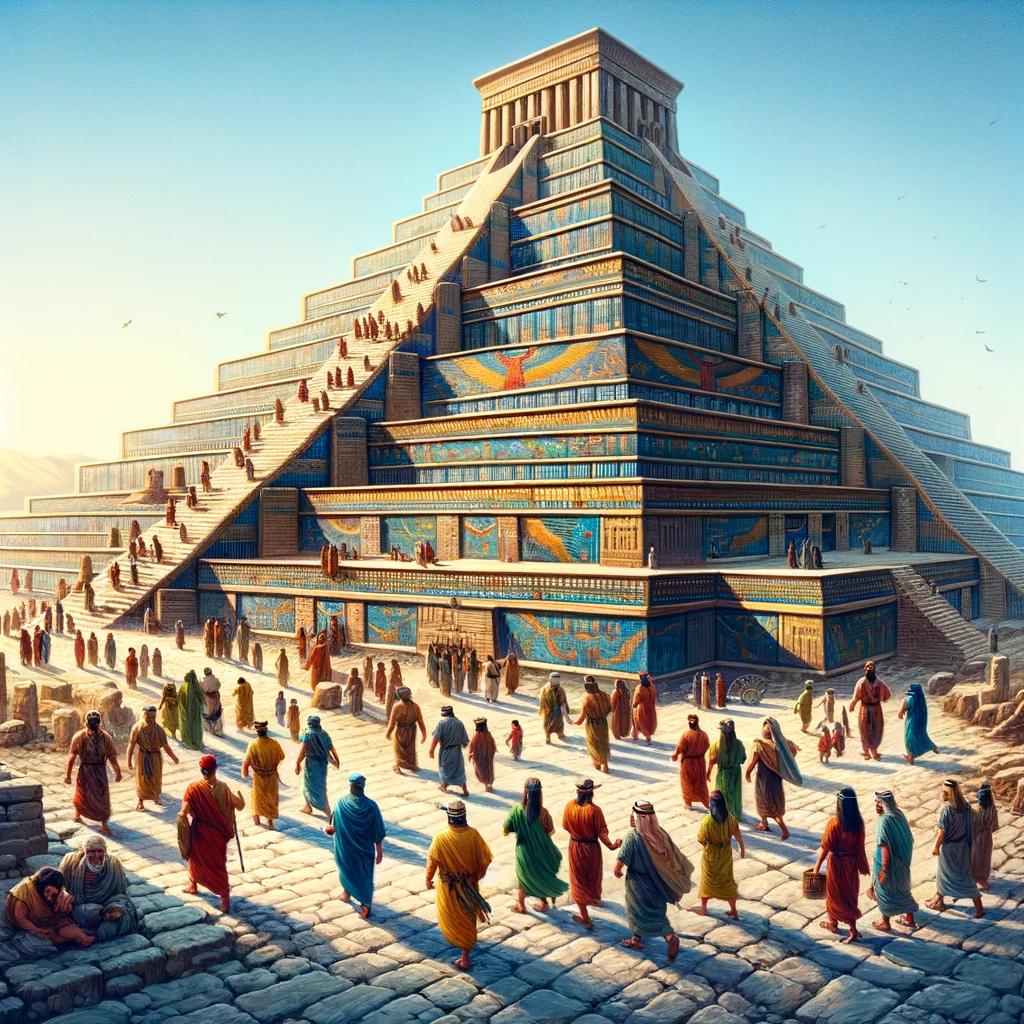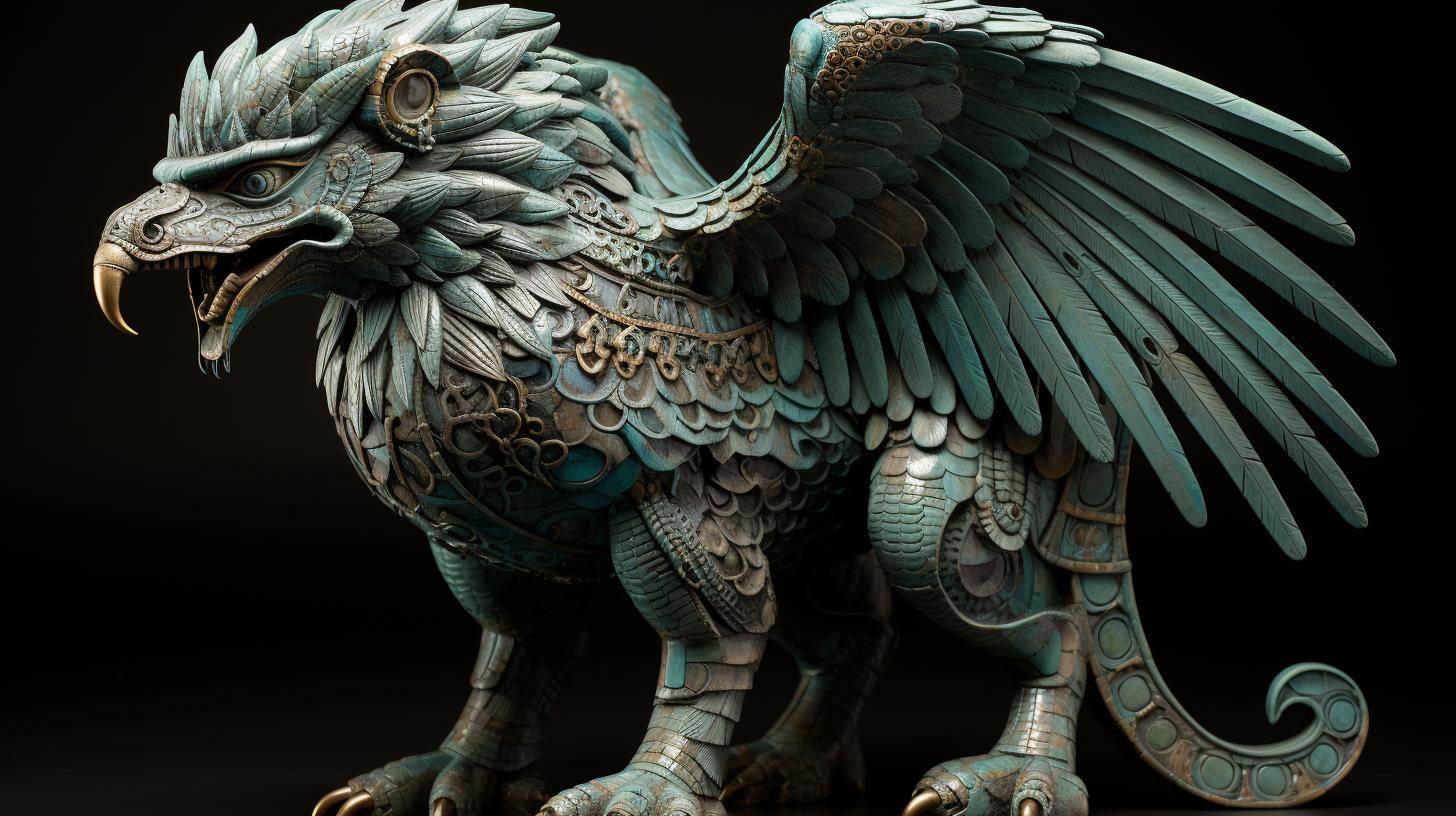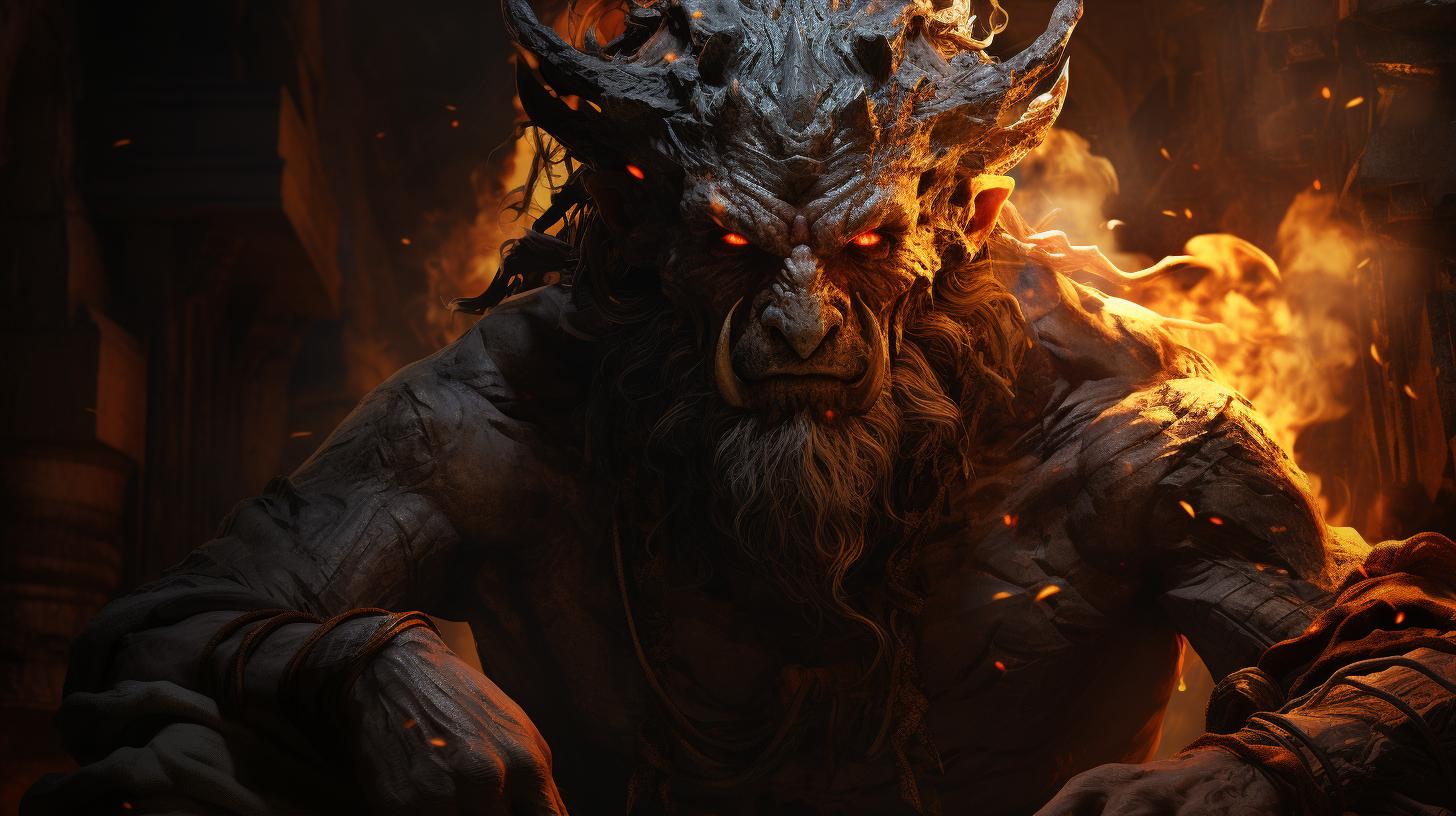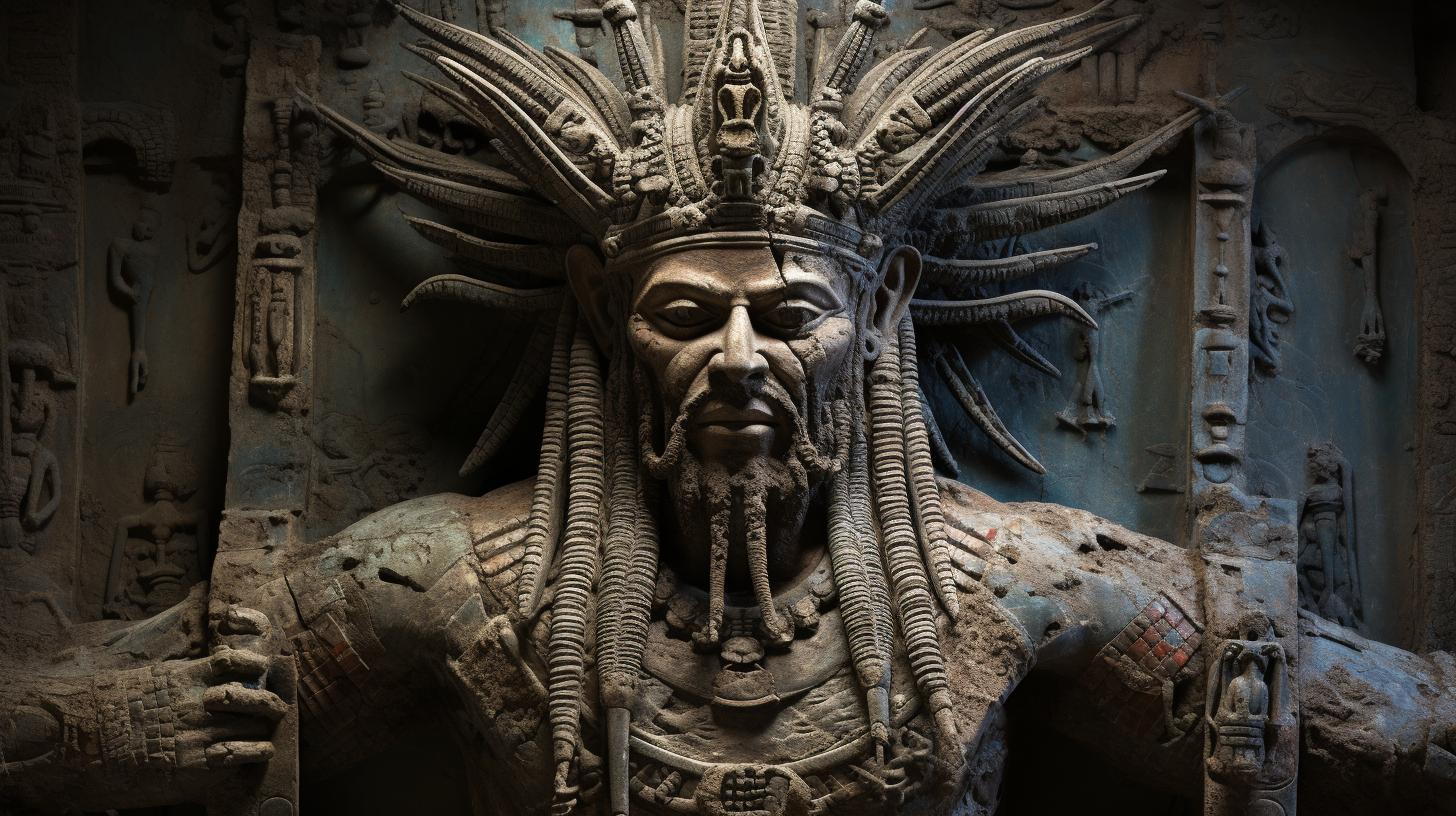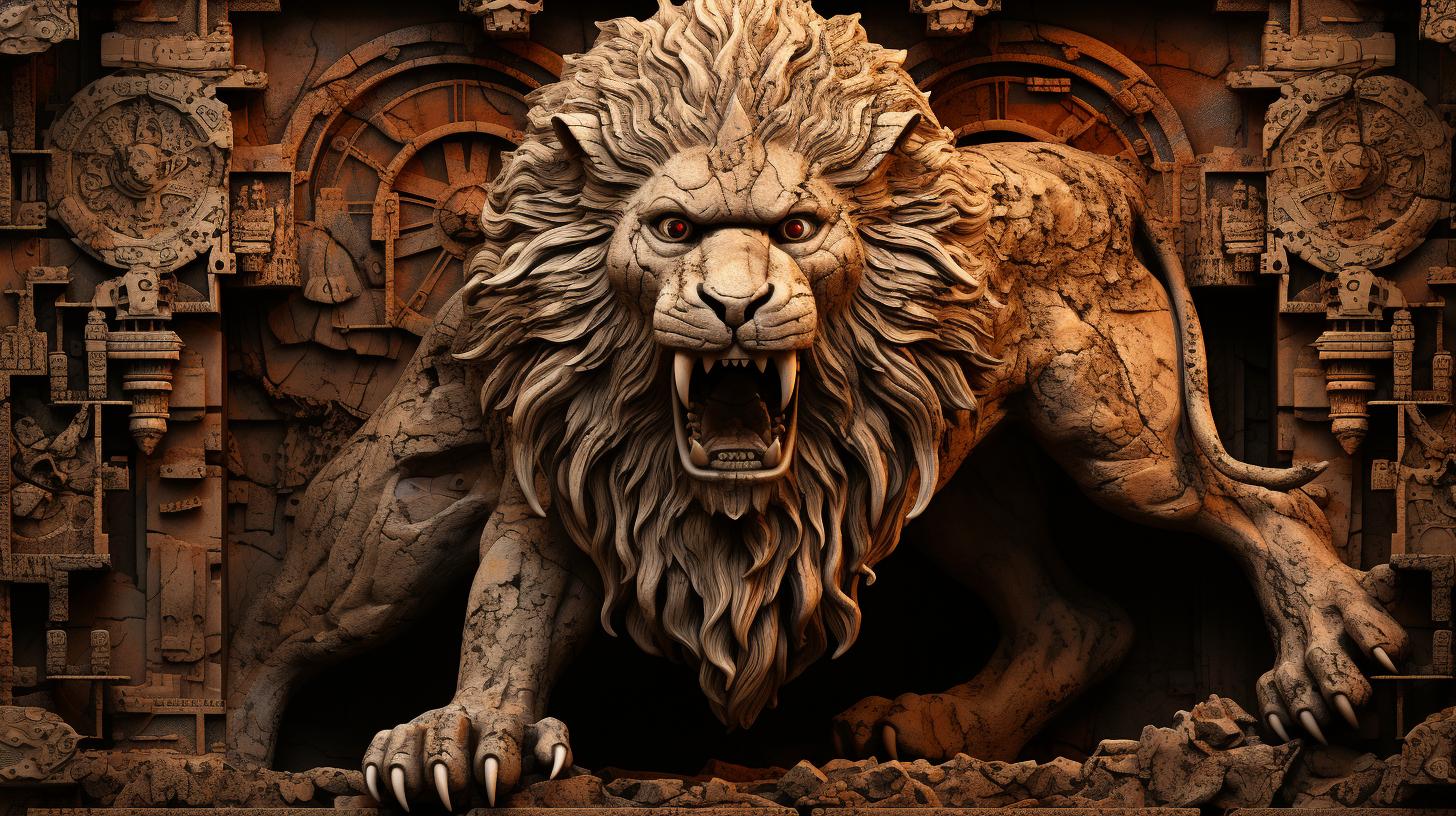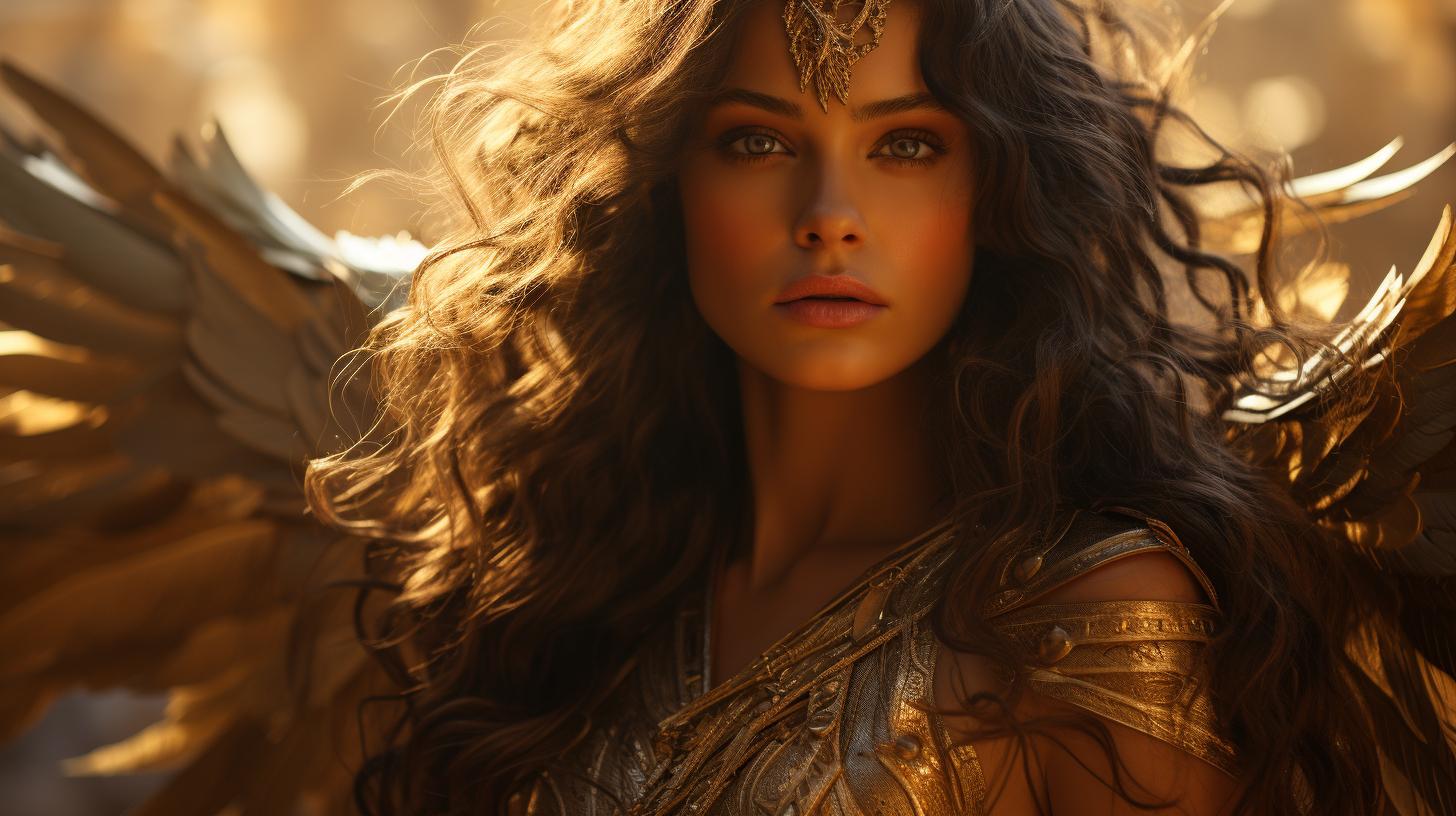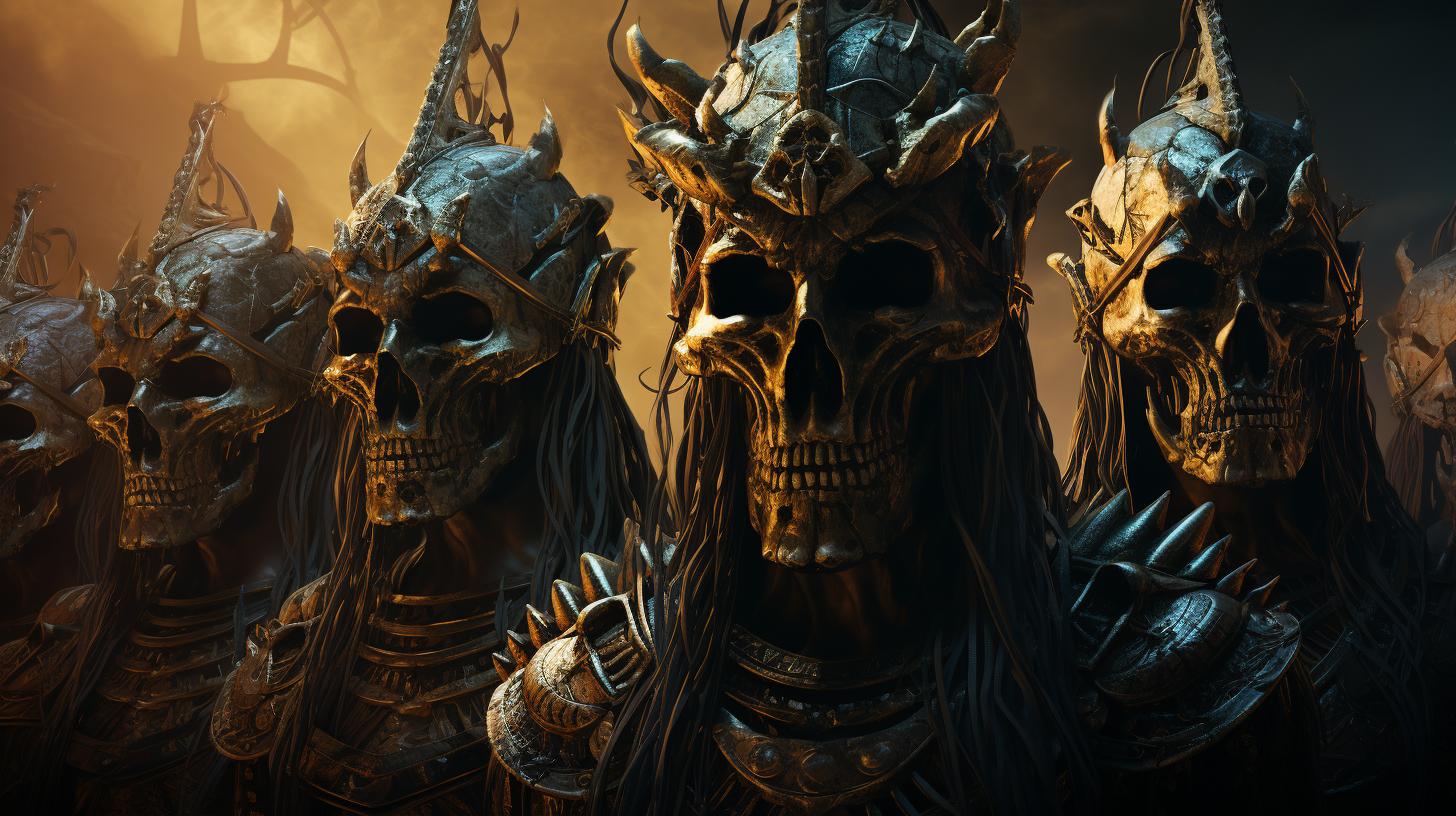Kusarikku: Unraveling the Mysteries of the Mesopotamian Bull-Man
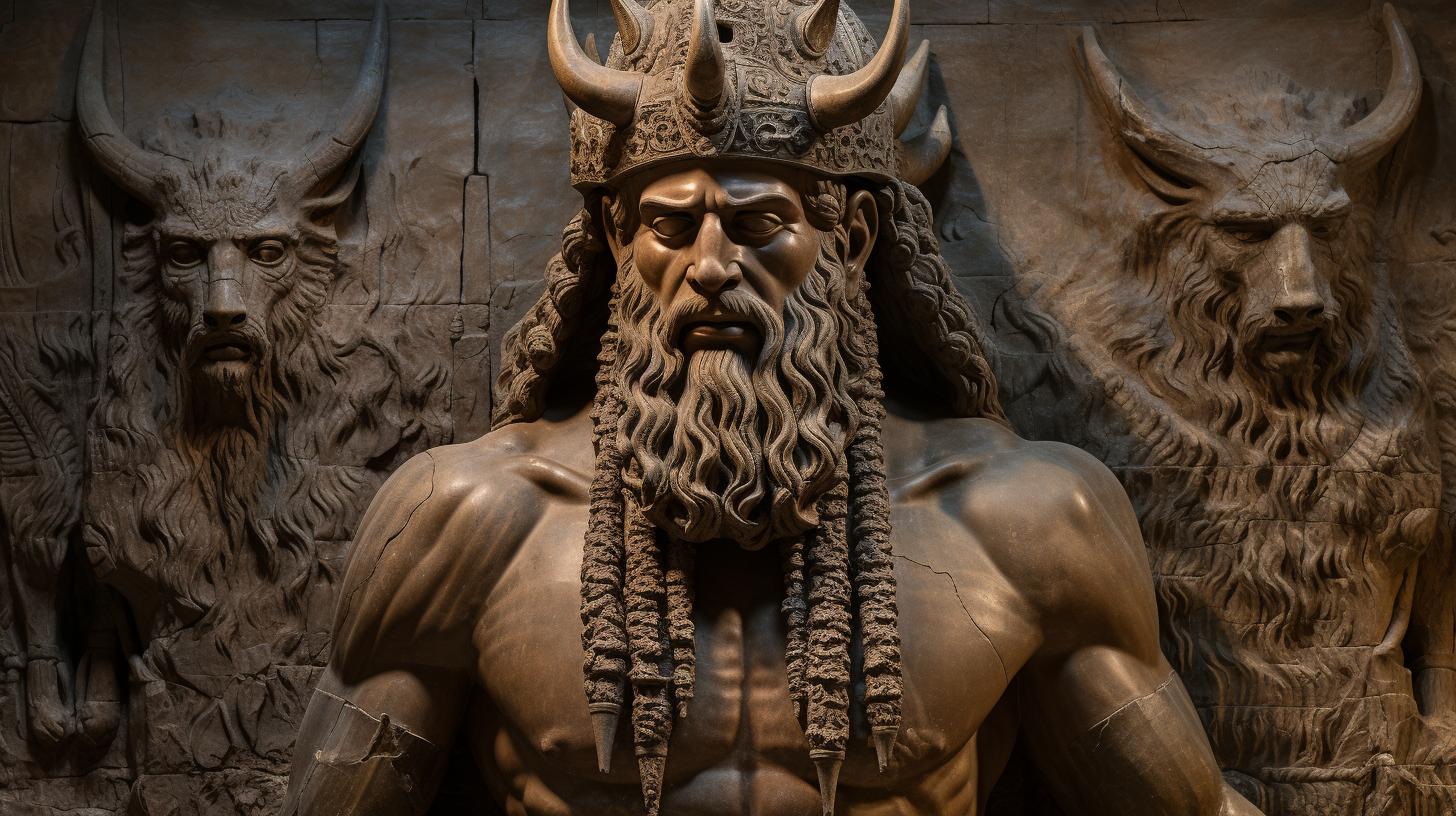
Kusarikku, also known as ‘the Bull-man,’ was a significant deity in Mesopotamian mythology. This hybrid creature, depicted with the body of a bull and the upper body of a man, symbolized justice and served as a powerful guardian of doorways.
Associated with fertility and abundance, Kusarikku played a crucial role in bringing forth new life and prosperity. Additionally, Kusarikku’s presence ensured the rise of the sun and the beginning of a new day.
With its rich symbolism and cultural significance, Kusarikku continues to intrigue scholars and inspire modern interpretations.
The Origin of Kusarikku in Mesopotamian Mythology
The ancient civilization of Mesopotamia was a rich and complex society that gave rise to numerous mythical creatures. Among them, Kusarikku stands out as a fascinating entity with its origins deeply rooted in Mesopotamian mythology.
The Mythical Creatures of Mesopotamia
The culture of Mesopotamia abounds with tales of fantastical beings, each possessing its unique attributes and significance. These mythical creatures played a vital role in the religious and cultural narratives of the ancient Mesopotamians, reflecting their worldview and beliefs.
Introduction to Kusarikku: The Bull-Man Deity
Kusarikku, also known as the Bull-man, is a captivating entity that embodies the profound symbolism and duality of the human and animal realms. This creature is depicted as a hybrid being, presenting the body of a powerful bull and the upper portion of a human figure.
The Sumerian Influence on Kusarikku’s Iconography
Within the pantheon of Mesopotamian deities, Kusarikku holds a significant position, particularly in Sumerian mythology. The influence of Sumerian civilization on the iconography and symbolism associated with Kusarikku is remarkable, shaping the representation and understanding of this enigmatic entity.
The Symbolism and Role of Kusarikku
In Mesopotamian mythology, Kusarikku holds significant symbolism and plays a crucial role in various aspects. This section explores Kusarikku’s symbolic representation, its role as a guardian, and its connection to the god Shamash and the sun.
The Bull as a Symbol of Fertility and Power
The bull holds deep symbolism in ancient Mesopotamian culture, representing fertility, power, and abundance. Kusarikku, portrayed with the body of a bull, embodies these qualities, symbolizing the potential for new life and prosperity.
Kusarikku as a Guardian of Justice and Doorways
Kusarikku’s role as a guardian of justice is prominent in Mesopotamian mythology. As the Bull-man deity, it safeguards the boundaries and acts as a gatekeeper, preventing unauthorized entry. Kusarikku’s imposing presence and power instill a sense of protection and ensure fairness in the face of adversity.
Kusarikku’s Connection to Shamash and the Sun
Kusarikku shares a strong connection with Shamash, the Mesopotamian sun god. Its role in maintaining the gates of dawn allows Shamash to pass through, symbolizing the emergence of the sun and the beginning of a new day.
Kusarikku’s presence guarantees the return of light, warmth, and the cyclical nature of life.
Depictions of Kusarikku in Ancient Art and Texts
In the rich tapestry of ancient Mesopotamian culture, Kusarikku, the Bull-man deity, is prominently featured in both visual representations and written texts. Through these depictions, we gain valuable insights into Kusarikku’s significance and role within the mystical realm.
Visual Representations of Kusarikku
A fascinating array of artistic representations brings Kusarikku to life. These portrayals typically depict the hybrid creature with a bull’s body and a human’s upper torso adorned with a crown of majestic horns.
The striking imagery serves as a tangible symbol of Kusarikku’s power and authority.
Artistic renditions often emphasize intricate details, such as Kusarikku’s bearded visage and muscular physique. Symbolic elements like the staff or weapon held by Kusarikku further highlight the deity’s protective nature and association with justice and defense.
Kusarikku’s Appearance in Ancient Mesopotamian Texts
Beyond visual representations, ancient Mesopotamian texts provide intriguing glimpses into Kusarikku’s mythical presence. These writings describe Kusarikku as a guardian of the gates, entrusted with preserving the sanctity of thresholds. Kusarikku’s appearance in these texts reinforces its prominent role as a gatekeeper and protector.
Descriptions often extol Kusarikku’s divine lineage, with some texts attributing its parentage to the primordial goddess Tiamat. These narratives heighten Kusarikku’s divine status and add depth to its mythological significance in Mesopotamian cosmology.
Kusarikku in Mythological Narratives and Epics
Kusarikku’s presence extends beyond mere depictions and mentions in isolated texts. The deity features in various mythological narratives and is often associated with epic tales, further cementing its importance in Mesopotamian folklore.
These narratives position Kusarikku as a crucial figure, sometimes engaging in heroic feats or playing a pivotal role in epic struggles between gods and monsters. These stories serve to amplify Kusarikku’s mythic reputation and solidify its position as a revered deity within the pantheon of Mesopotamian gods.
Exploring the multifaceted depictions and mentions of Kusarikku in ancient art and texts allows us to delve deeper into the mythology of ancient Mesopotamia, unraveling the intricate layers of symbolism, power, and divine presence that permeated this fascinating civilization.
Kusarikku: Patron of Fertility and Protector of the Underworld
In Mesopotamian mythology, Kusarikku played a vital role as a patron of fertility and a guardian of the underworld. This section delves into Kusarikku’s significance in ensuring fertility and abundance, its role as the protector of the realm of the dead, and the rituals and offerings dedicated to this divine being.
Kusarikku’s Role in Ensuring Fertility and Abundance
Kusarikku, represented by its hybrid form of a bull-man, symbolized the power of fertility in ancient Mesopotamia. It was believed that invoking Kusarikku would bring about prosperity, agricultural abundance, and the continuation of life.
Through its association with the bull, known as a symbol of strength and reproductive potential, Kusarikku played a crucial role in ensuring the fertility of the land and the people.
The Guardian of the Underworld: Kusarikku and the Realm of the Dead
Kusarikku also held the responsibility of protecting the underworld and preventing the escape of souls.
Positioned at the gates of the realm of the dead, this mythical creature stood ready to defend against any intruders seeking to disturb the balance between the living and the deceased.
Its presence ensured the order and harmony of the afterlife and emphasized the importance of respecting the boundary between the mortal realm and the realm of the dead.
Rituals and Offerings Dedicated to Kusarikku
In ancient Mesopotamia, various rituals and offerings were dedicated to Kusarikku, seeking its favor and invoking its protective powers.
These rituals often involved chanting incantations, performing ceremonies in sacred spaces, and offering symbolic items such as food, drink, and precious objects. By honoring and appeasing Kusarikku through these rituals, individuals and communities sought to gain its blessings, ensuring bountiful harvests, prosperity, and protection against malevolent forces.
Legacy and Influence of Kusarikku in Modern Culture
The ancient deity Kusarikku continues to leave a lasting impact on modern culture, captivating artists, writers, and enthusiasts alike. Its image and symbolism are frequently depicted in various forms of art and have become iconic representations of Mesopotamian mythology.
Kusarikku’s Image and Symbolism in Art and Popular Culture
Kusarikku’s distinctive appearance as a hybrid creature, with the body of a bull and the upper torso of a man, has inspired numerous artistic interpretations. Paintings, sculptures, and even tattoos often feature Kusarikku’s imposing figure, highlighting its symbolic representation of power, protection, and the union of human and animal forces.
The symbolism of Kusarikku transcends visual art and extends to popular culture. Its image has been incorporated into various mediums such as films, video games, and even merchandise, further spreading its influence and fascination among contemporary audiences.
Kusarikku’s References in Contemporary Literature and Media
Kusarikku’s rich mythology and intriguing persona have captured the attention of authors, who often include references to this deity in their works. Whether it be in novels, poems, or even comic books, Kusarikku’s presence adds depth and historical context to the narratives, allowing readers to delve into the ancient world of Mesopotamia.
Moreover, Kusarikku’s intriguing character has found its way into various forms of media, such as documentaries and educational videos, where its significance in Mesopotamian mythology is explored and shared with a wider audience.
Exploring Kusarikku’s Influence on Mesopotamian Revival Movements
Kusarikku’s legacy extends beyond the realms of art and literature, as it has also played a significant role in Mesopotamian revival movements. Enthusiasts and researchers have dedicated themselves to studying and reviving the ancient Mesopotamian culture, and Kusarikku stands as a prominent figure in these endeavors.
Through archaeological discoveries, scholarly research, and reinterpretations of ancient texts, Kusarikku’s influence on the revival of Mesopotamian traditions and beliefs has become evident. Its representation and symbolism continue to inspire those seeking to reconnect with the cultural heritage of this ancient civilization.
Unveiling the Secrets of Kusarikku: Recent Discoveries and Research
As our understanding of Mesopotamian mythology continues to evolve, recent discoveries and research have shed new light on the enigmatic deity, Kusarikku. Exciting archaeological findings have uncovered artifacts and structures that provide insights into the worship of Kusarikku.
Archaeological Finds Shedding Light on Kusarikku’s Worship
Archaeologists have unearthed temples and shrines dedicated to Kusarikku, revealing the significant role this deity played in ancient Mesopotamian religious practices. These findings have offered valuable clues about the rituals, offerings, and ceremonies associated with Kusarikku’s worship.
Decoding Mythological Texts and Interpretations of Kusarikku
A deep dive into mythological texts and ancient inscriptions has allowed scholars to decipher the myths and stories related to Kusarikku. By analyzing these texts, researchers have gained a deeper understanding of Kusarikku’s characteristics, role, and interactions with other deities in Mesopotamian mythology.
Modern Scholarly Perspectives on Kusarikku and Mesopotamian Mythology
Contemporary scholars continue to explore Kusarikku’s significance within the context of Mesopotamian mythology. Through interdisciplinary studies, researchers are combining archaeological, historical, and literary evidence to develop comprehensive interpretations of Kusarikku’s place in ancient Mesopotamian society and its enduring cultural impact.
The ongoing investigation into Kusarikku and recent scholarly research provide us with a richer understanding of this captivating deity, enhancing our knowledge of Mesopotamian mythology as a whole.
Exploring Kusarikku’s Significance in the Ancient World
As we delve deeper into the significance of Kusarikku in the ancient world, we uncover fascinating insights into its place within the Mesopotamian pantheon and religious practices.
Kusarikku’s Place in Mesopotamian Pantheon and Religious Practices
Kusarikku held a unique position among the deities of Mesopotamia. It was revered as a lesser deity associated with justice and guarding doorways, making it an integral part of religious rituals and belief systems.
In Mesopotamian pantheon, Kusarikku stood as a powerful guardian figure, invoked for protection and strength in various aspects of life. It played a crucial role in maintaining order and ensuring the well-being of the community.
Kusarikku’s Historical Context and Cultural Significance
To understand Kusarikku’s historical context, we must consider the broader cultural landscape of ancient Mesopotamia. The significance of bulls and bull-like creatures in Mesopotamian art and mythology reflects the cultural emphasis on fertility and abundance.
Kusarikku’s association with fertility and its role as a protector of doorways reflect the ancient Mesopotamians’ desire for prosperity and their belief in the interplay between the divine and human realms.
Comparative Analysis: Kusarikku and Similar Deities in Other Ancient Civilizations
While Kusarikku holds a prominent position in Mesopotamian mythology, it is intriguing to explore the parallels and differences between Kusarikku and similar deities in other ancient civilizations.
Comparative analysis reveals that bull-headed and bull-bodied deities appear in various mythologies worldwide, often associated with power, fertility, and protection.
These similarities suggest common cultural motifs and shared human experiences across different civilizations.
By examining Kusarikku’s place in the Mesopotamian pantheon, its historical significance, and its connections with deities from other ancient civilizations, we gain a deeper understanding of its cultural impact and the universal themes it represents.
.

